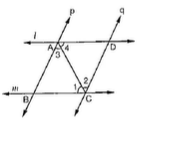l and m are two parallel lines intersected by another pair of parallel lines p and q (see Fig. 7.19). Show that ΔABC≅ΔCDA.
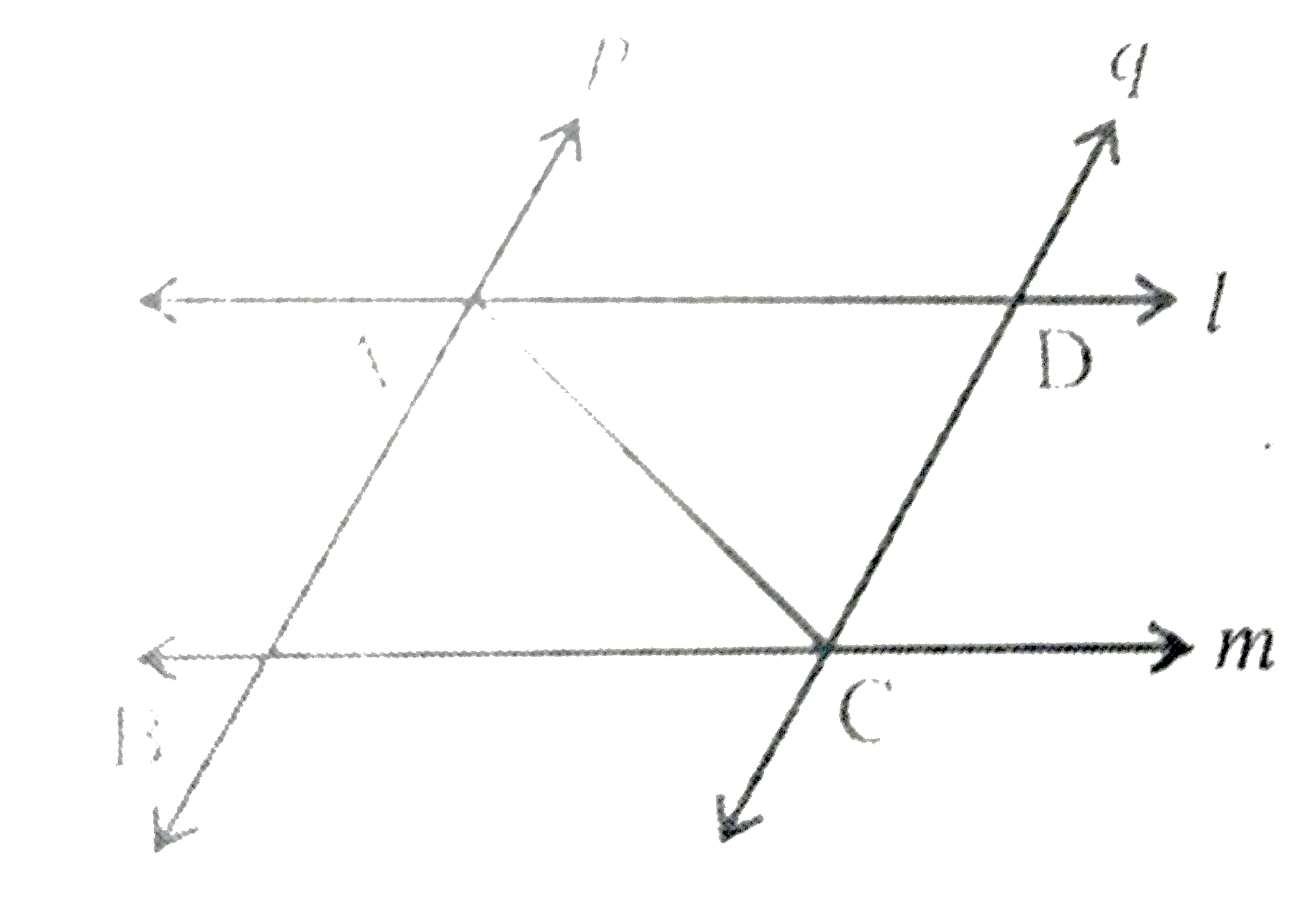
Please refer to video for the figure.
As line l and m are parallel and AC is their transversal, opposite interior angles will be equal.
So, ∠CAD=∠BCA
Similarly, as As line p and q are parallel and AC is their transversal, opposite interior angles will be equal.
So, ∠ACD=∠BAC
Now, in ΔABCandΔCDA
∠BCA=∠CAD
∠BAC=∠ACD
AC=AC(Common side)
So, by ASA criterion for congruence,
ΔABC≅ΔCDA
Similar Questions
Knowledge Check
- Question 1 - Select One
Find the total number of quadrilaterals when 8 parallel lines intersect another set of 15 parallel lines.
A3636B2940C1990D3654
l and m are two parallel lines intersected by another pair of parallel lines p and q as shown in figure. Show that ABC≅CDA.
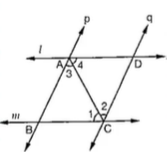 View Solution
View SolutionIn thg given figure, two parallel lines l and m are intersected by two parallel lines p and q.
Show that ΔABC≅ΔCDA.
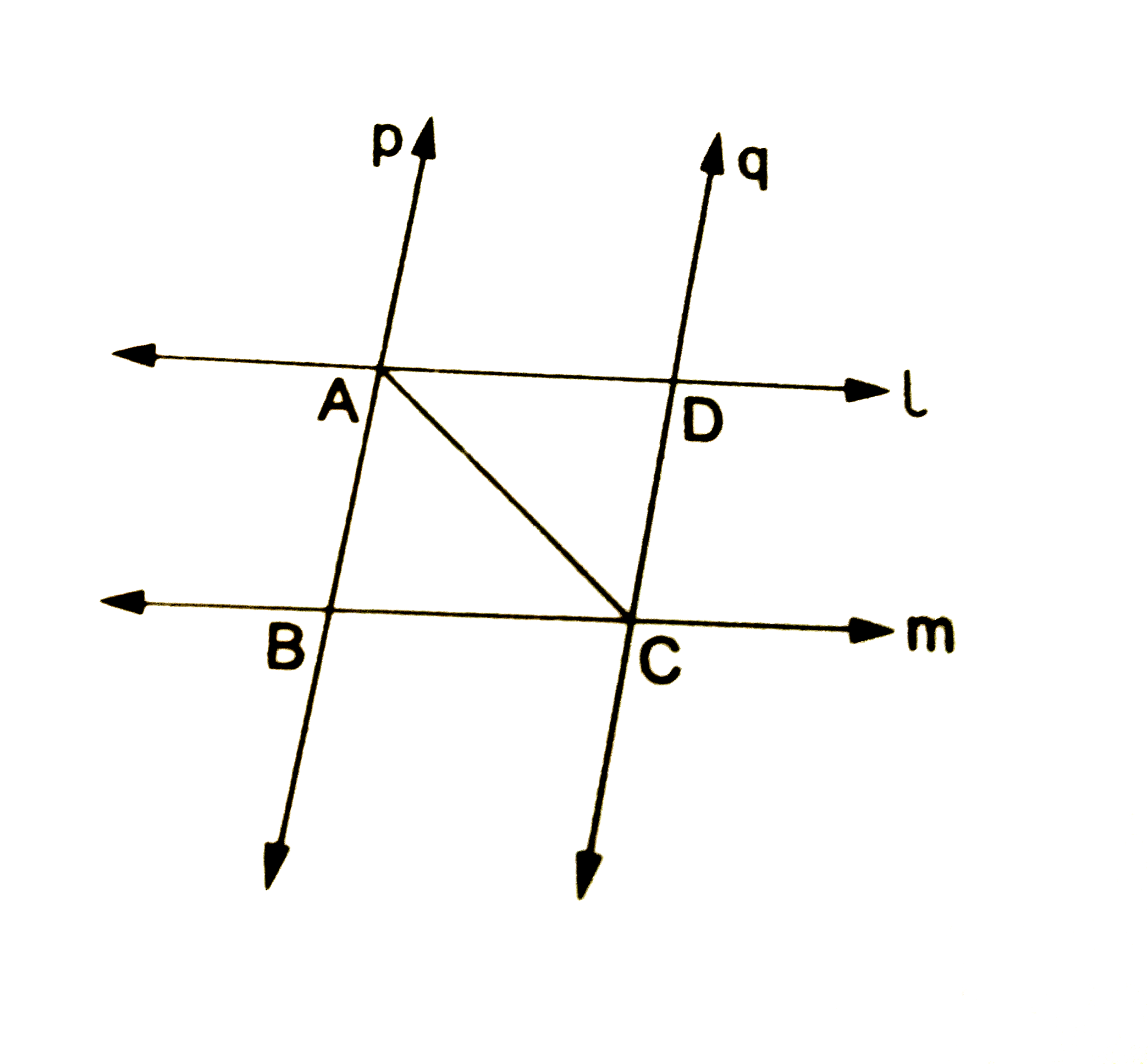 View Solution
View SolutionIn quadrilateral ACBD, AC = ADand AB bisects ∠A(see Fig. 7.16). Show that ΔABC≅ΔABD
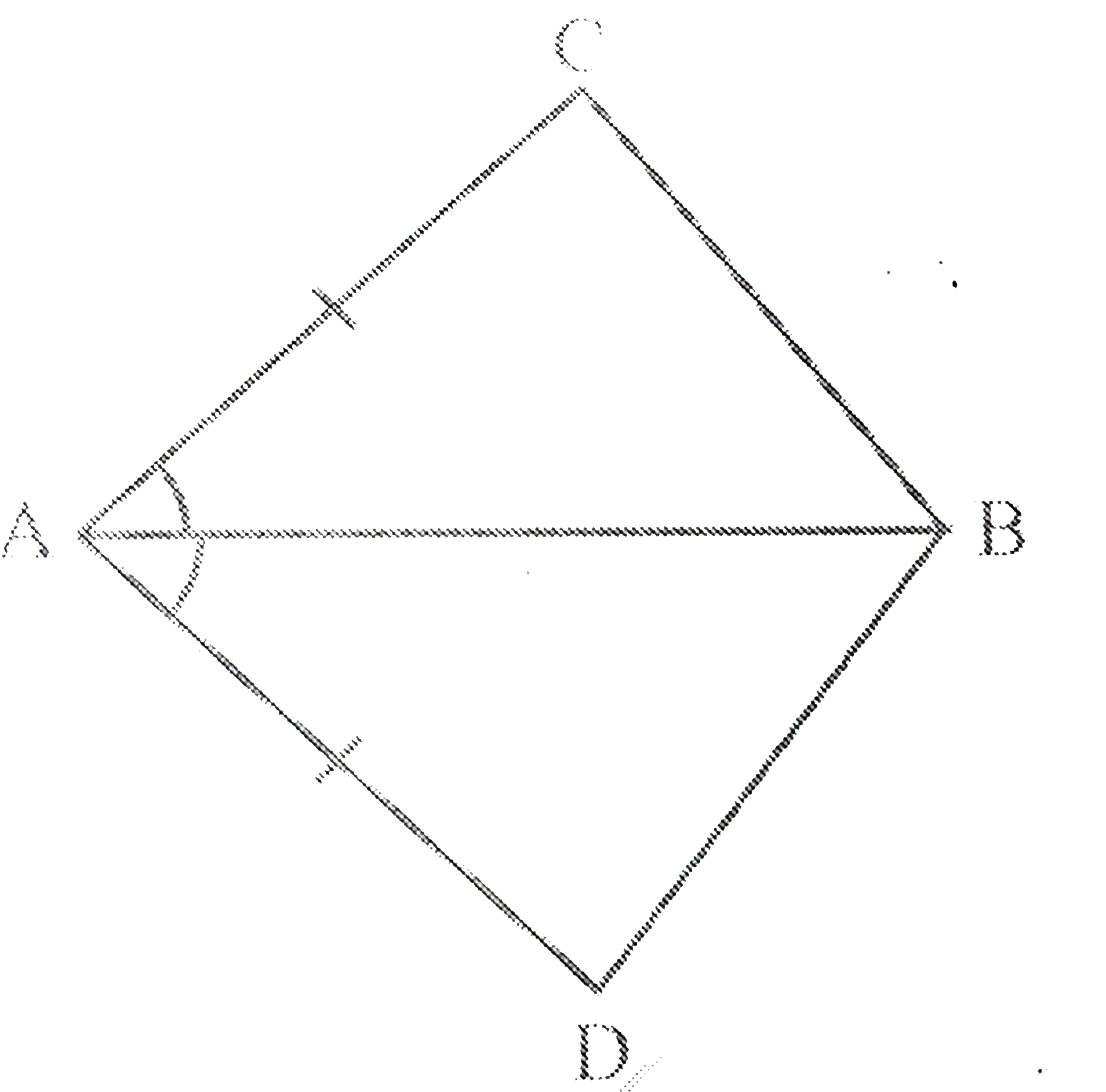 View Solution
View SolutionWhich of the following statements are true and which are false ?
If two line segments do not intersect, they are parallel.View SolutionIn Fig. l, m and n are parallel lines intersected by transversal p at X, Y and Z respectively. Find ∠1, ∠2 and ∠3
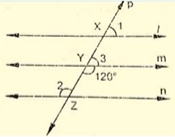 View Solution
View SolutionIf two parallel lines intersected by a transversal , then name the pair of angles formed that are equal .
View SolutionLine-segment AB is parallel to another line-segment CD. O is the mid-point of AD (see Fig. 7.15). Show that
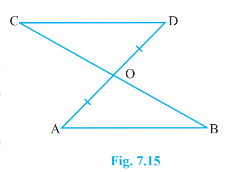
(i) ΔAOB≅ΔDOC
(ii) O is also the mid-point of BCView Solution


